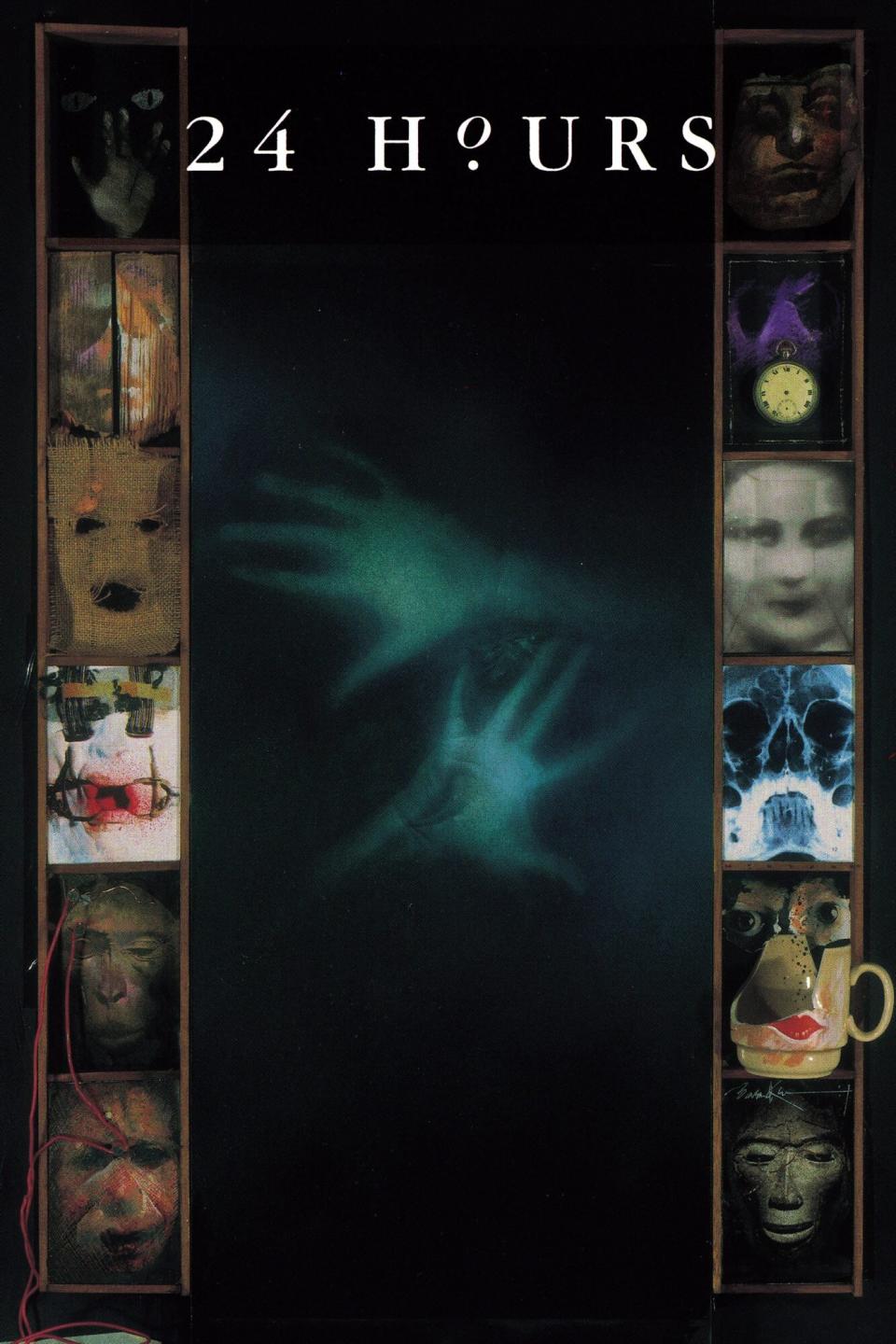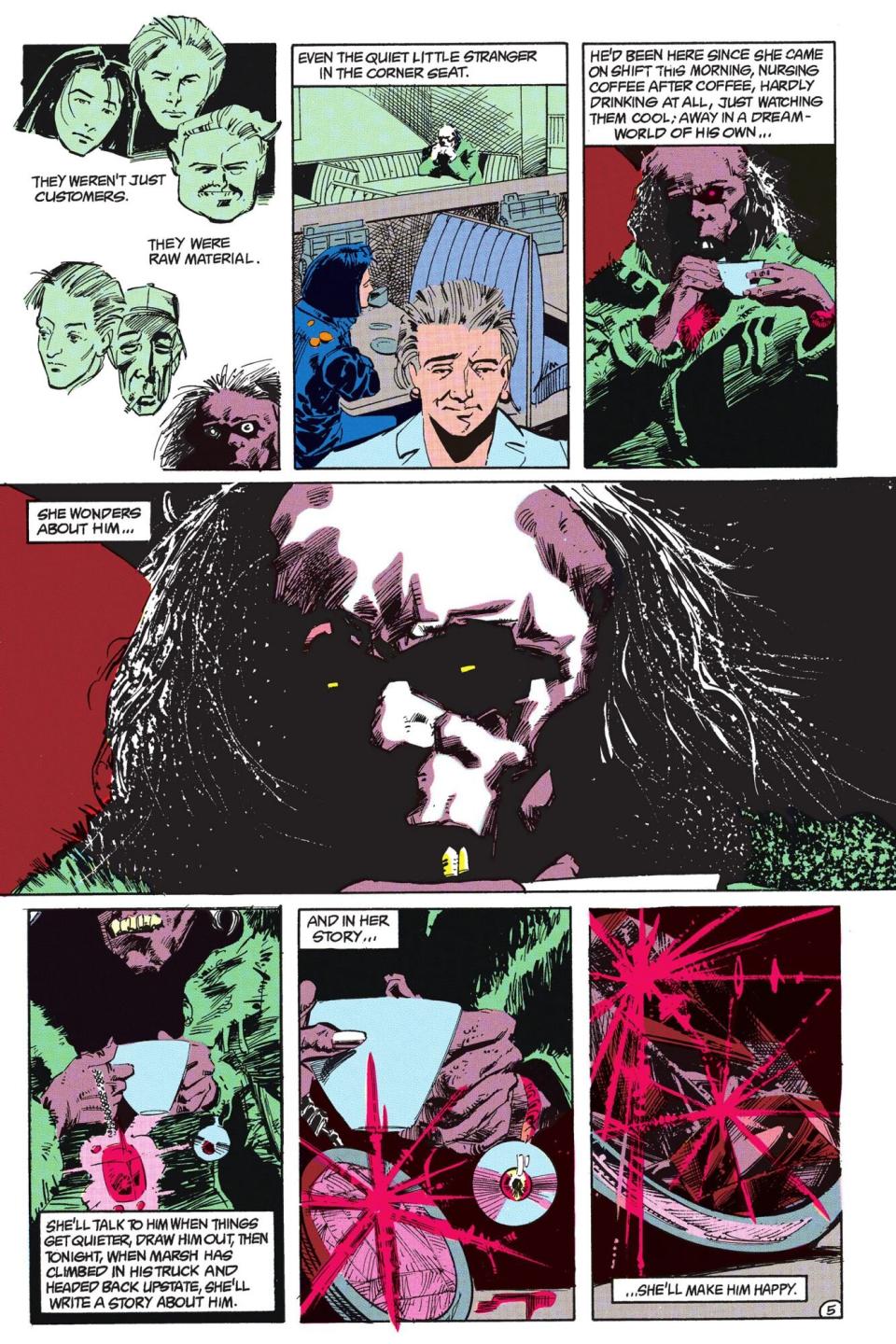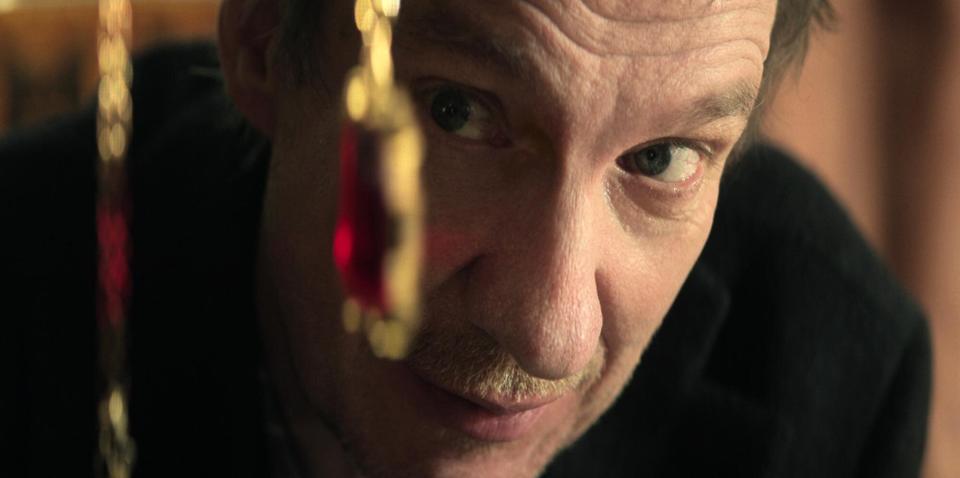How Netflix's The Sandman brought the scariest issue of Neil Gaiman's comic to screen
Warning: This article contains spoilers for the fifth episode of Netflix's The Sandman, "24/7."
The Sandman is not primarily a horror series. Over the course of 75 issues, writer Neil Gaiman used his protagonist — Morpheus, the king of dreams — to explore all manner of stories, from fairytales to historical fiction. But The Sandman did get very scary, especially in its early run. The sixth issue in particular might be the scariest horror comic ever published.
Written by Gaiman with art by Mike Dringenberg and Malcolm Jones III, "24 Hours" barely even features Morpheus. Instead, it focuses on a lunatic villain named John Dee who has stolen one of Morpheus' most powerful artifacts (a ruby with the power to manipulate people's dreams) and uses it to terrorize the staff and customers of a diner over the course of a full day.
Back in 2017, EW interviewed Gaiman about "24 Hours" for a special Halloween-focused issue. He told us then that the story's structure (with a ticking clock of 24 hours spent in a 24-hour diner) was inspired by Peter Greenaway's film Drowning by Numbers, which counts from 1-100 as more characters are killed in increasingly depraved ways. More importantly, Gaiman noted that the horror of "24 Hours" helped to set reader expectations for the subsequent issues of The Sandman — a reading he still stands by.
"One of the reasons I wrote that issue was to say, 'Look, this narrative will not always be trustworthy,'" Gaiman tells EW in a more recent interview. "It will not always be kind, people will not always get out alive, bad things can happen. What was nice is I never had to go that dark again. The readers always knew that I had, and always knew that I was capable of it, and that things could get dark."

DC Comics The cover of 'The Sandman' #6, a.k.a. '24 Hours.' Cover art by Dave McKean

DC Comics The first page of 'The Sandman' #6, written by Neil Gaiman with art by Mike Dringenberg and Malcolm Jones III

DC Comics John Dee as seen in 'The Sandman' #6 by Neil Gaiman, Mike Dringenberg, and Malcolm Jones III
Here we are five years later, and The Sandman has finally been adapted for screen by Netflix. The first season premiered on the streaming platform on Aug. 5, and the fifth episode ("24/7") is an adaptation of "24 Hours." But while some episodes (like the sixth, "The Sound of Her Wings") are almost word-for-word interpolations of The Sandman issues, others — like "24/7" — adjust and interpret the stories anew.
"Our whole approach to the show was emotional and character first," showrunner Allan Heinberg tells EW. "So we changed our approach to John Dee's story. In the comic, he's a supervillain who has been driven mad, and he really wants to just burn the world down; his intentions are simple malicious destruction. We knew that we wanted to build out John Dee's character and actually make him relatable and sympathetic, the hero of his own story. And because we had David Thewlis, who is absolutely brilliant in it, we wanted to craft a part that was almost Shakespearean in its tragedy."
Since "24 Hours" was one of The Sandman's early issues, Gaiman was still filling out his story with known characters from the DC universe. John Dee was part of that and is the human name of the old Justice League supervillain Doctor Destiny. But Netflix's The Sandman isn't in continuity with any other DC property, so the show's John Dee as played by Thewlis is no supervillain. He's just a normal human who's been in and out of asylums his whole life.

Liam Daniel/Netflix John Dee (David Thewlis) terrorizes a diner full of people in Netflix's 'The Sandman'

Netflix John Dee (David Thewlis) is up to no good with a magical ruby in 'The Sandman'
He's also spent his life searching for love and fulfillment, because the show makes clear that Dee is the illegitimate son of Sir Roderick Burgess (Charles Dance), the magician who initially captured Morpheus and imprisoned him for decades. As a result, Dee sees the ruby as his birthright — and he wants to use it to strip away the illusions that harmed him and his mother, Ethel Cripps (Joely Richardson), who never received legitimacy or respect from their aristocratic lover and father.
"Instead of wanting to destroy the world, he wants to save it," Heinberg says. "That was a huge thing for us. Our country was, and still is to some degree, in the middle of a political meltdown where the truth is being denigrated. What we were all craving at the time was an honest world. So we decided to let John be our superhero, let John use the ruby to try to make the world an honest one and see what actually happens when that's the case."
At first, it all seems to go well. Instead of using the ruby to make the diner's inhabitants perform depraved acts as he does in the comic, the show's Dee initially uses the ruby to help them — letting the heartbroken lesbian Judy (Daisy Head) find new love with waitress Bette (Emma Duncan) and solving the loveless marriage between corporate CEO Kate Fletcher (Lourdes Faberes) and lesser executive Gary Fletcher (James Udom) by bringing them new sexual partners as well. But eventually they all realize that Dee is manipulating them — and they don't like it.

Liam Daniel/Netflix Kate Fletcher (Lourdes Faberes), Marsh (Steven Brand), Bette (Emma Duncan), Judy (Daisy Head), and Mark (Laurie Davidson) in Netflix's 'The Sandman'
When the diner customers and staff start pushing back against Dee's control, that's when he comes down hard and makes them commit the most violent acts from the comic — like fry cook Marsh (Steven Brand) chopping off his own fingers with a meat cleaver or Judy poking out her eyes with a skewer. By the end, they're all dead, and it falls to Morpheus (Tom Sturridge) to step in and prevent Dee from harming anyone else.
"We knew that we were never gonna go for pure shock or gross-out horror. It had to be psychological, it had to be emotional," Heinberg says. "So that last sequence, where John is controlling them and things do become physical, I hope that feels earned because we've gotten them to the point where their feet are to the fire, so to speak. Rather than going in with the intention of 'this is our gross-out horror story,' I wanted to fall in love with these people and then be crushed as their dreams are snuffed out."
The Sandman is streaming now on Netflix, and the original comics are available wherever books are sold.
Sign up for Entertainment Weekly's free daily newsletter to get breaking TV news, exclusive first looks, recaps, reviews, interviews with your favorite stars, and more.
Related content:

 Yahoo News
Yahoo News 
